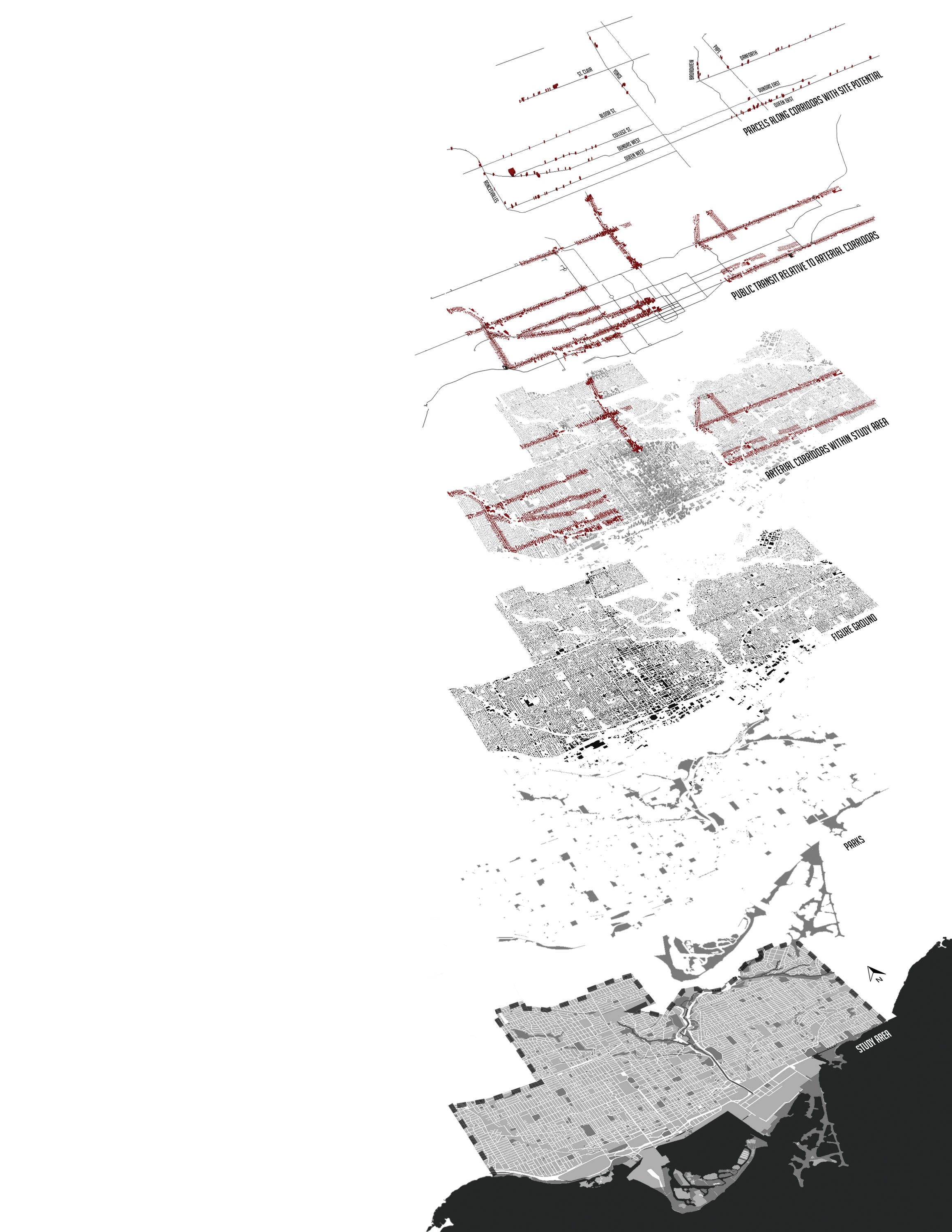
Of the thesis entitled: Courtyard Urbanism A model for North American cities?
Abstract:
The
courtyard
has
endured
as
one
of
the
most
widespread
architectural
forms.
It
transcends
regional,
historical
and
cultural
boundaries
to
mediate
open
and
closed,
inside
and
outside,
social
constraints
and
environmental
requirements.
What
new
role
can
the
courtyard
play
in
today's
dense
urban
setting?
Historically
the
courtyard
was
the
center
of
domestic
life,
production
and
activity
for
the
family.
As
domestic
priorities
changed
within
the
industrial
setting
of
a
North
American
city,
the
courtyard
lost
its
value.
The
European
courtyard
block
has
therefore
struggled
to
be
realized
as
an
effective
building
typology
in
North
America.
While
the
courtyard
has
historically
been
used
for
high-density
low-rise
housing,
such
as
the
Cerdà
block
in
Barcelona,
building
construction,
such
as
in
contemporary
Toronto,
is
dominated
by
high-rise
high-density
building
typology.
As
Toronto's
population
increases
the
city
is
seeing
an
influx
of
high-rise
condo
development.
The
problem
becomes
that
the
rapid
urbanization
of
these
high-rise
towers
increases
density
and
overloads
resources
to
the
point
where
infrastructure
cannot
keep
up.
Through
city
initiatives
such
as
the
"Avenue
and
Mid-Rise
Study,"
the
city
of
Toronto
has
tried
to
establish
a
mid
rise
building
typology
to
accommodate
a
gradual
transition
of
density
and
allow
infrastructure
to
catch
up.
In
parallel,
these
high-rise
condo
towers
fail
to
incorporate
public
green
spaces
within
the
city.
With
the
increase
in
density
over
the
coming
years,
and
no
new
parks
being
added
to
the
downtown
core,
this
number
will
start
to
diminish.
This
thesis
aims
to
create
a
framework
to
test
Europe's
courtyard
typological
attributes
against
Toronto's
main
street
development
strategy
in
order
to
balance
green
space
and
density,
by
providing
a
new
approach
to
a
traditional
urban
design
problem
of
accommodating
future
growth
in
the
city.
The examining committee is as follows:
Supervisor: Val Rynnimeri, University of Waterloo
Committee Members: Rick Andrighetti, University of Waterloo, David Correa, University of Waterloo
External Reader: Michael Hannay, MBTW
The committee has been approved as authorized by the Graduate Studies Committee.